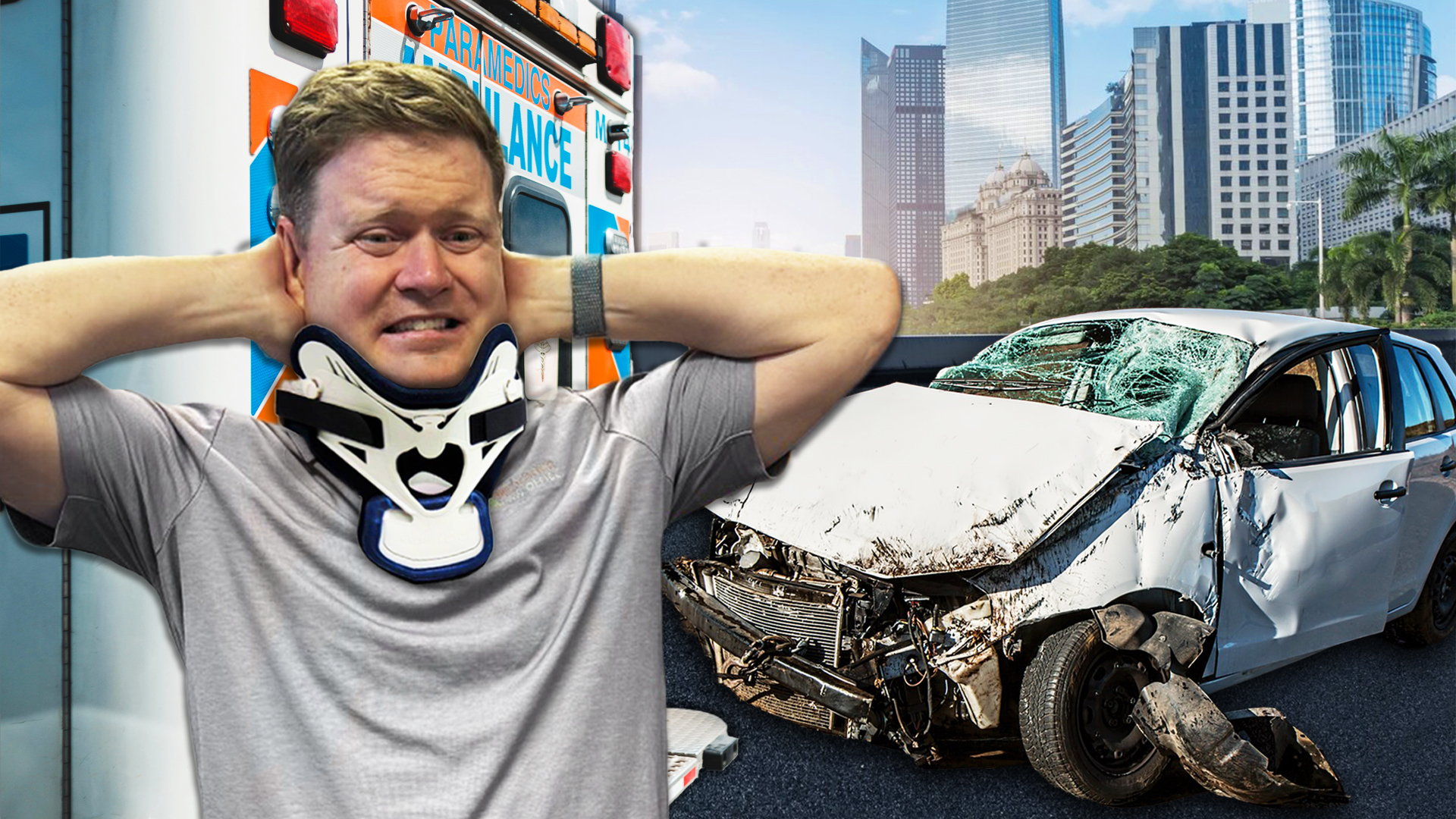If you did not cause your car accident, you deserve maximum compensation in your injury case. In this video, I will provide you with four tips that can help you potentially get the most amount of money possible in your claim for injuries following your car accident. To illustrate how these tips can help, let me tell you the story of my past client, Amber.
Amber was injured in a rear-end car accident. She contacted Meagher Injury Lawyers months after her car accident looking for help. She had been handling her injury case on her own and had no idea what to do next, even though the other driver’s insurance company had admitted liability in her injury claim.
Amber had pretty significant neck problems pre-existing her car accident. She had been treated for these neck problems prior to the accident. Amber’s car accident aggravated her problems. Instead of seeking medical treatment right away, however, she did not seek medical attention for her neck until weeks after the accident. Her first time seeing any medical provider after the accident was just at her next scheduled appointment with her doctor, who was already treating her for her neck problems prior to the accident.
When Amber called me, she explained that the insurance company had not yet offered her a penny on her case. After Amber hired me, my staff and I immediately requested and gathered her medical records and bills for all her medical treatments following the accident, including the surgery records. I then sent a written demand to the insurance adjuster demanding they pay out their insurance policy limits.
Tip 1: Send a Written Demand for the Policy Limits
In the state I practice law in, Kentucky, the other driver’s insurance company does not have to disclose what the policy limits are to you prior to filing a lawsuit. So, it’s usually a good idea to make a written demand simply asking that they offer the policy limits in my state. But this tip can be useful in any state. The written demand for the policy limits is a useful way to initiate settlement. Insurance companies will usually start off with a low offer when they make their first offer to you. So even if your case is not worth the policy limits, it’s not a bad idea to start out at the high offer amount of the policy limits. But if your case is worth over and above the policy limits amount, it’s wise to stick with your demand, asking the insurance company to pay you the policy limits even after they make you a low-ball initial offer.
In Amber’s case, in response to my written demand, the insurance adjuster only made an initial offer of $5,000. The adjuster argued that my client’s surgery was not related to the car accident, as she would have had to have the surgery regardless of the car accident, given her pre-existing problems with her neck. This is a common argument made by insurance companies. Based on my recommendation, Amber declined this lowball offer of $5,000, and we advised the insurance company we were sticking with our policy limits demand offer.
Tip 2: Get a Doctor’s Report Linking Your Injuries to the Car Accident
I next sent Amber to a doctor to perform an independent medical examination on her. After performing the examination on her, the doctor provided me with a written report in which the doctor confirmed that her neck problems were aggravated by the car accident and that the neck surgery was appropriate, reasonable, and necessary as a result of the motor vehicle accident. You can either request one of your treating doctors to do this or hire an independent doctor to perform an independent medical examination.
In the case of Amber, I got her doctor’s report and then sent the doctor’s report to the insurance company and again demanded that the insurance adjuster pay out the insurance policy limits. A doctor’s report can be very helpful in an injury case as it can clear up any issues like whether the injuries were actually caused by the accident. It can also help quantify the amount of your damages. At the end of the day, insurance companies will typically place more value on your case if you get a written report from a doctor detailing your injuries caused by the accident.
In Amber’s case, after we sent the doctor’s report to the insurance company, the insurance adjuster upped their offer by coming back with an offer of $10,000. This still wasn’t enough, though, so we then rejected this offer. The insurance company was playing hardball, so it was time for me to take additional action to show the insurance company we were serious about resolving Amber’s case for the available insurance policy limits. So next, I filed a lawsuit on Amber’s behalf against the insurance company’s insured driver who caused the accident.
Tip 3: File a Lawsuit If You Don’t Get a Fair Offer
If you don’t get a fair and reasonable offer from the insurance company for your claim, file a lawsuit. It’s been my experience that the insurance company almost always will offer you more money in your case at some point after you file a lawsuit. Filing a lawsuit puts pressure on the insurance company. Lawsuits cost time and money; the insurance company will have to hire a defense lawyer to defend the claim. Filing a lawsuit can usually end up with a settlement. The insurance company may increase your negotiation leverage because once a lawsuit is initiated, the insurance company may be more motivated to negotiate a fair settlement to avoid the time and expenses associated with litigation, along with the uncertainty of a trial.
After I filed the lawsuit for Amber, we consistently stuck with our demand offer for the policy limits. We refused to accept any offer short of the policy limits. The insurance company finally gave in, and we finally were able to settle the case for the $100,000 policy limits I demanded when I started working on the case.
Tip 4: Stick to Your Demand
Stick to the amount you have evaluated the value of your case, and do not go below that amount. Stick to your policy limits offer. If your case is evaluated at an amount over the policy limits, insurance companies will try to trick you into settling for a lower amount, saying your case doesn’t have the value you’re asking for. Do not fall for the insurance company’s tricks. Stay strong and stick with what you have the case valued at, while looking at as much objective data as possible in the form of past jury verdicts for similar cases in your local area.
In Amber’s case, my estimation of her damages was well above the $100,000 offered, but given that it was the only insurance coverage available, it was in her best interest to accept the settlement. Amber was happy, and we got her injury case settled for 20 times the initial offer in her case.
Conclusion
The thing is, what happens if you have followed the four tips I’ve discussed in this video, but are not quite sure if what the insurance company is offering to settle your case is a fair and reasonable settlement offer? If that’s the case, I would highly suggest you watch the video about to pop up here, where I will tell you how injury lawyers and insurance companies go about calculating the value of a car accident injury claim. If you need a personal injury lawyer in Louisville or the surrounding areas consider hiring Meagher Injury Lawyers.
Lastly, if you’ve been injured in a car accident, slip or trip and fall incident, or dog attack incident in Kentucky, remember: don’t wait, call Tate.








Recent Comments